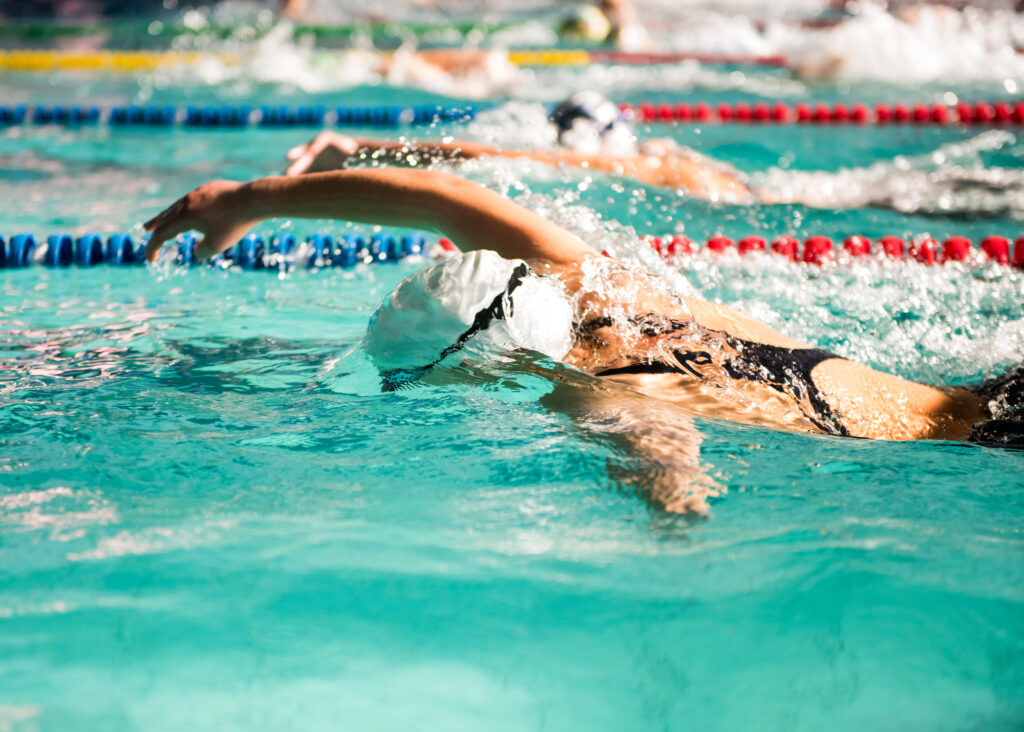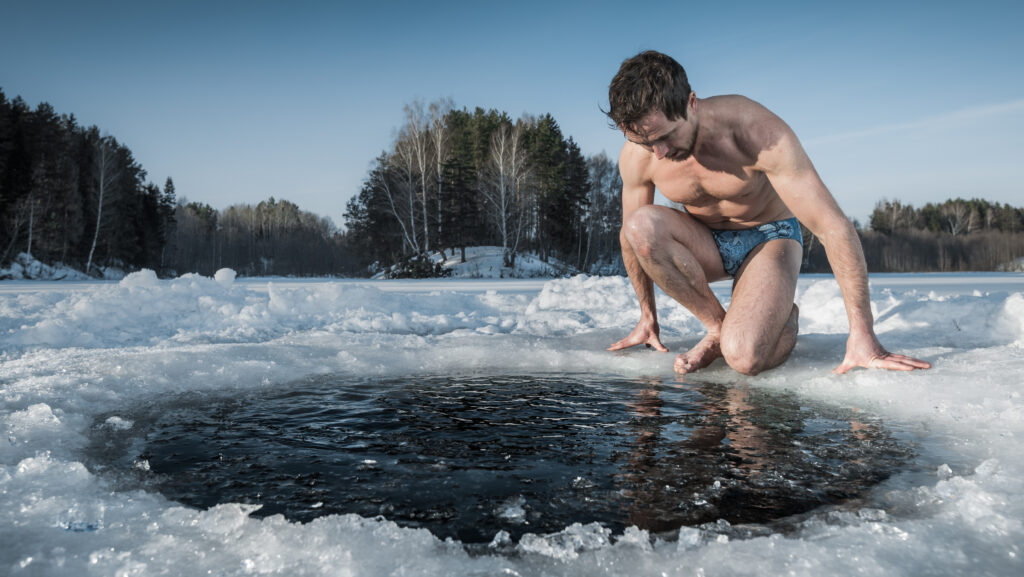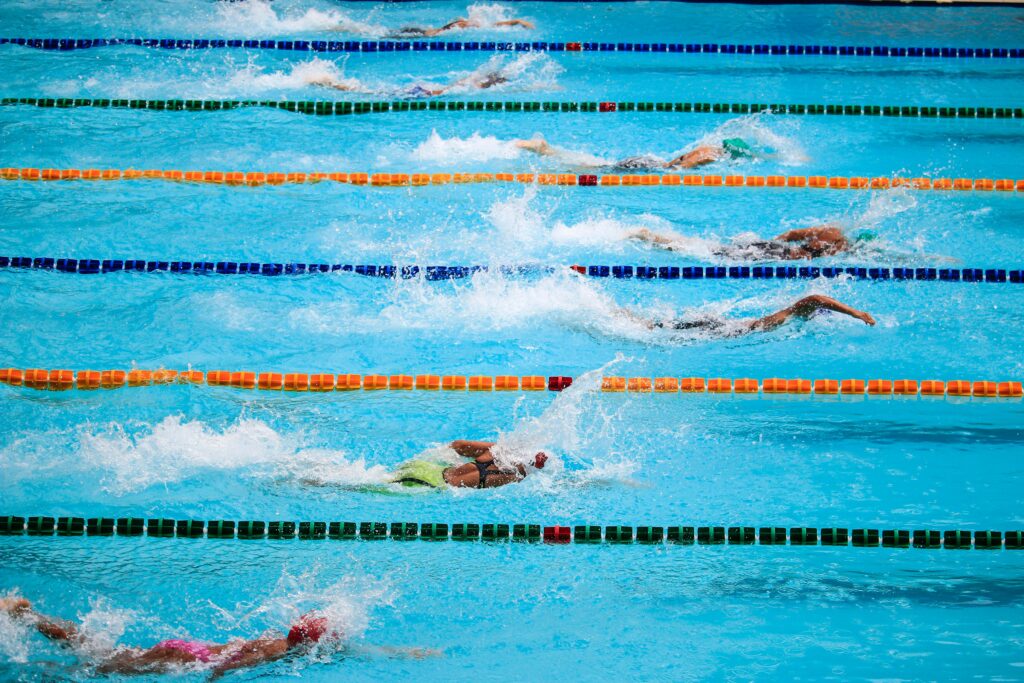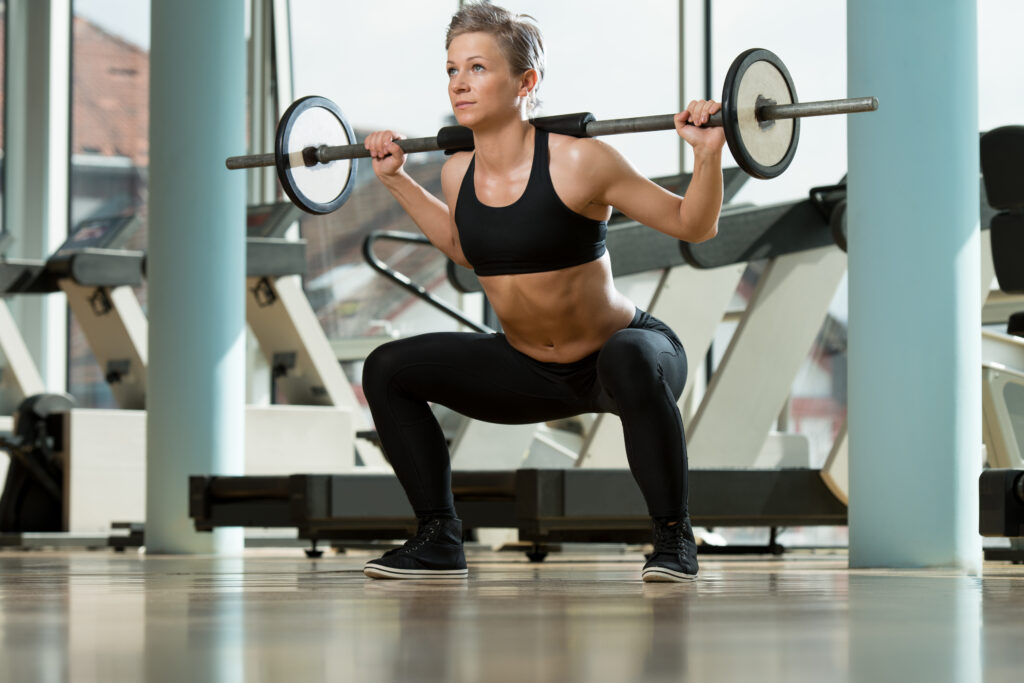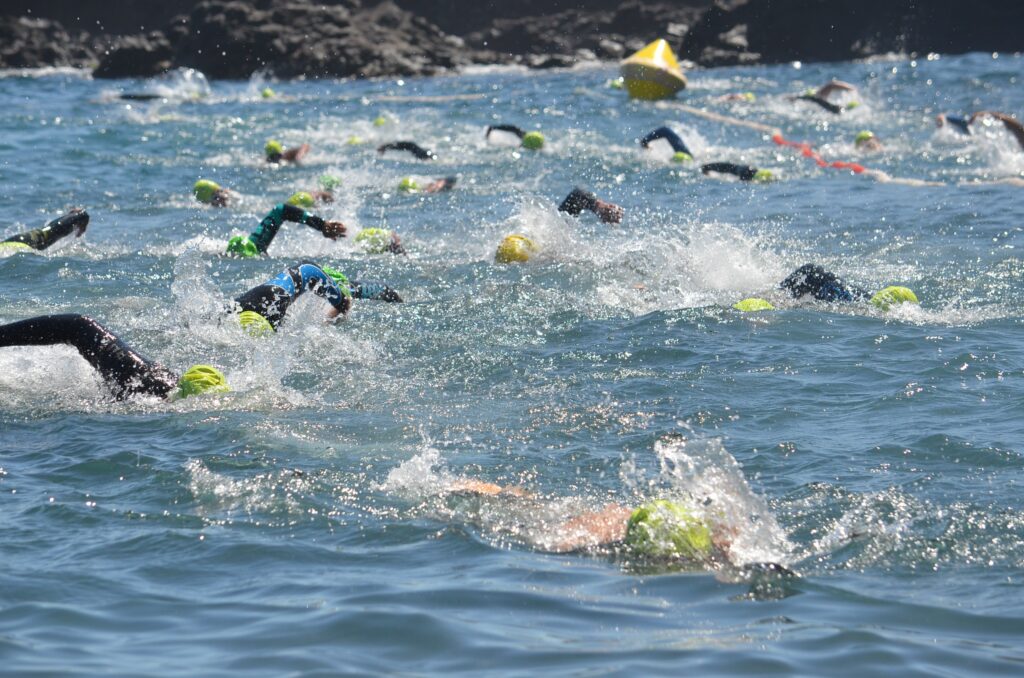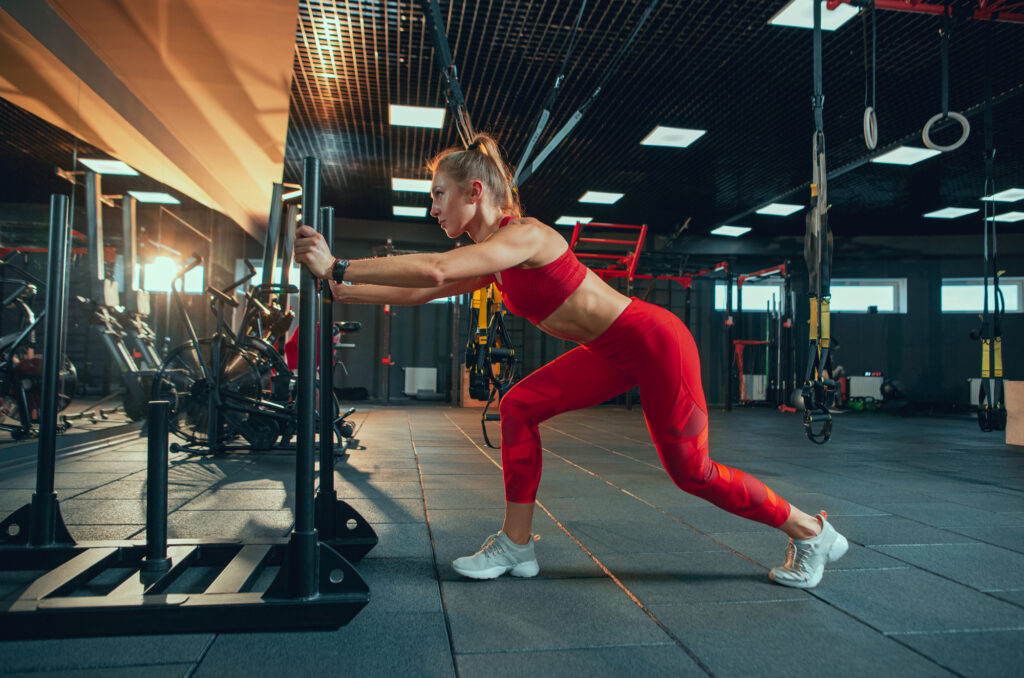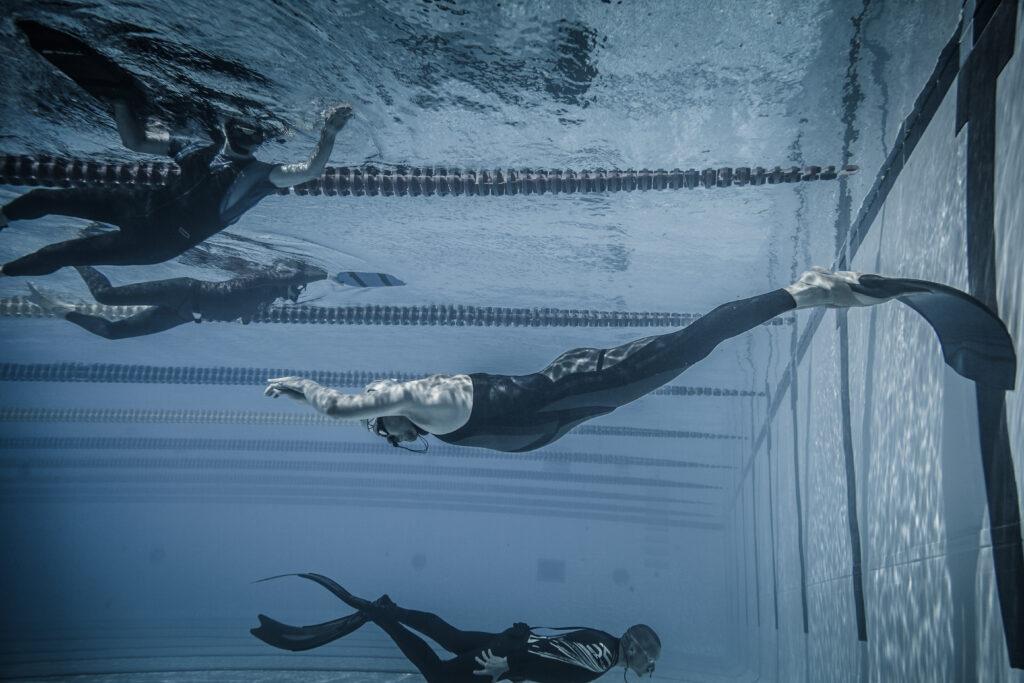Competitive swimming is a physically demanding sport that requires a lot of time, effort, and dedication. To perform at your best, you need to have the right swimming kit that can help you improve your technique, fitness, and overall performance. However, with so many different types of swimming equipment available in the market, it can be overwhelming to know what kit you need to improve your competitive swimming.
In this article, we will provide you with a comprehensive guide that outlines the essential swimming kit and training equipment that you need to improve your competitive swimming. We will also discuss performance-enhancing gear, maintenance and care of swimming kit, and how to choose the right kit for your needs. Additionally, we will provide you with some tips on where to buy competitive swimming kits and answer some frequently asked questions.
Key Takeaways
- Having the right swimming kit is essential to improve your competitive swimming performance.
- Essential swimming kit includes goggles, swim cap, wetsuit, and tow float.
- Training equipment such as pull buoys, paddles, and resistance bands can help improve your technique and fitness.
Understanding Competitive Swimming
Competitive swimming is a physically demanding sport that requires technical skill, strength, and endurance. To improve your performance, it is important to understand the basics, strokes, and techniques.
The Basics
Before diving into the strokes and techniques, it is important to understand the basics of competitive swimming. Here are some key terms you should know:
- Lane: The swimming lane is the designated area of the pool where you swim.
- Heat: A heat is a group of swimmers who compete against each other in a particular event.
- Event: An event is a specific race, such as the 100m freestyle or the 200m butterfly.
- Start: The beginning of a race, where swimmers dive into the water.
- Turn: A flip turn is a technique used at the end of each lap to change direction and push off the wall.
The Strokes
There are four main strokes in competitive swimming:
- Freestyle: Also known as front crawl, this is the fastest and most popular stroke. Swimmers use a flutter kick and alternate arm strokes to move through the water.
- Backstroke: Swimmers lie on their back and use an alternating arm motion and a flutter kick to move through the water.
- Breaststroke: Swimmers use a frog-like kick and an arm motion that pulls the body forward to move through the water.
- Butterfly: Swimmers use a dolphin kick and a simultaneous arm motion to move through the water.
The Techniques
To improve your competitive swimming performance, it is important to focus on technique. Here are some techniques to incorporate into your training:
- Streamlining: Reducing drag in the water by keeping your body straight and tight.
- Breathing: Proper breathing technique is important for maintaining speed and endurance.
- Stroke mechanics: Each stroke has specific mechanics that can be improved through practice and coaching.
- Starts and turns: Proper starts and turns can make a significant difference in your overall time.
By incorporating these basics, strokes, and techniques into your training regimen, you can improve your competitive swimming performance and reach your full potential in the pool.
Essential Swimming Kit
When it comes to competitive swimming, having the right kit is essential. In this section, we will discuss the three most important pieces of swimming kit that you need to have in order to improve your performance: swimsuit, goggles, and swim cap.
Swimsuit
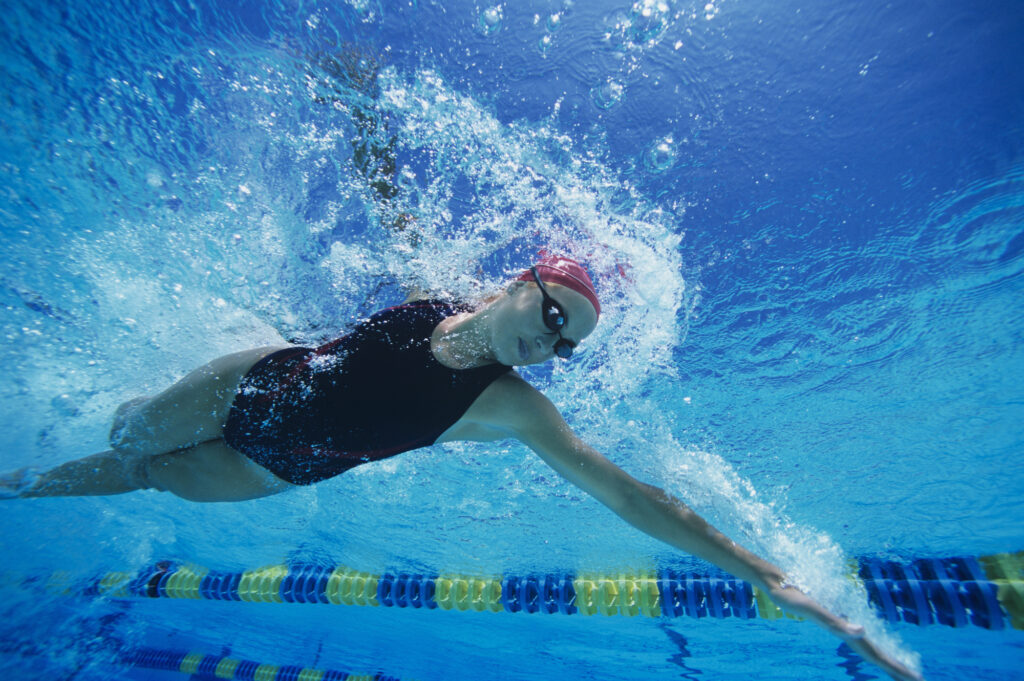
The right swimsuit can make all the difference in your swimming performance. It should fit well, be comfortable, and allow for ease of movement in the water. A good swimsuit should also be made of high-quality, chlorine-resistant material that will last you a long time.
When choosing a swimsuit, consider the type of swimming you will be doing. For example, if you will be doing long-distance swimming, a full-body swimsuit may be more appropriate as it provides more coverage and reduces drag. On the other hand, if you will be doing sprint swimming, a brief-style swimsuit may be more suitable as it allows for greater freedom of movement.
Goggles
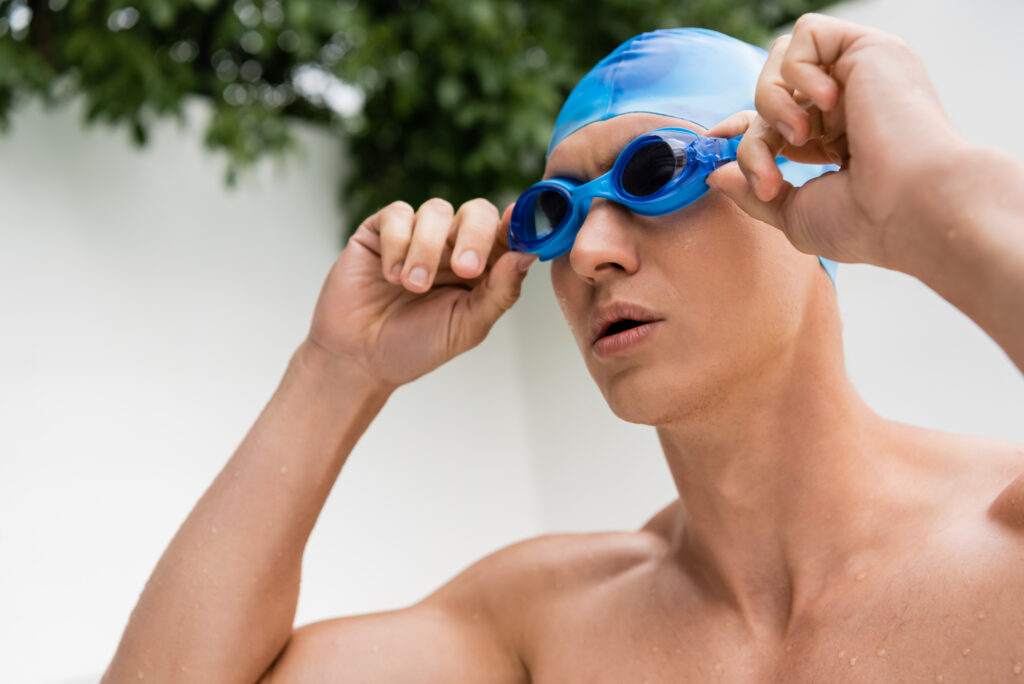
Goggles are another essential piece of swimming kit. They protect your eyes from the chlorine in the pool and help you see clearly underwater. When choosing goggles, make sure they fit well and do not leak. Look for goggles with anti-fog lenses to prevent them from fogging up during your swim.
There are different types of goggles available, such as mirrored lenses for outdoor swimming and tinted lenses for bright indoor pools. Choose the type of goggles that best suits your needs and preferences.
Swim Cap
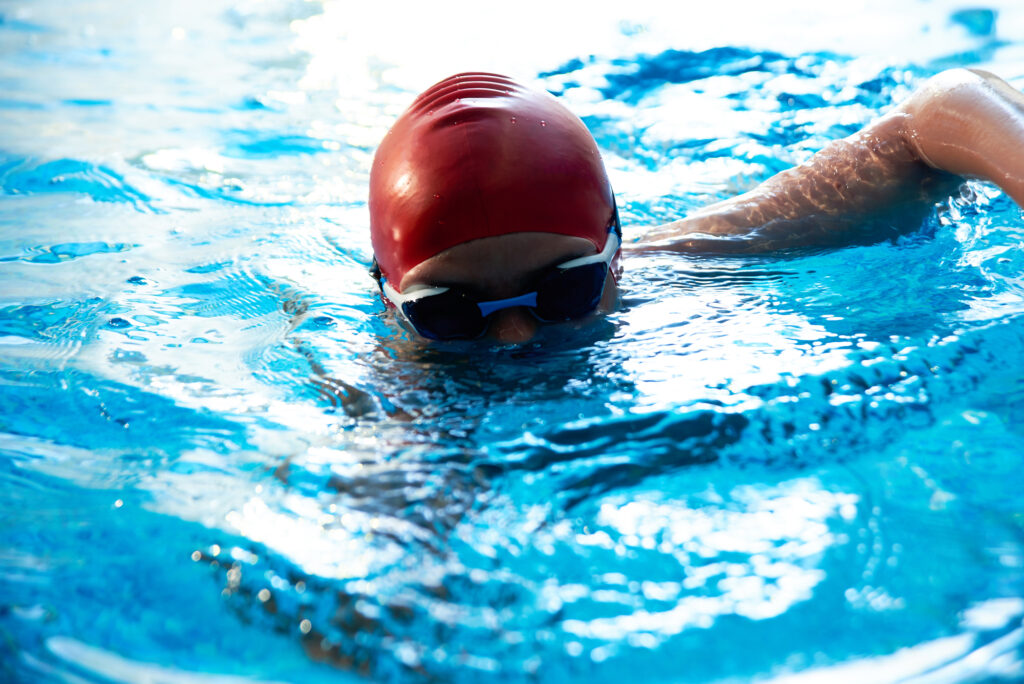
A swim cap is not only a requirement in most swimming pools, but it also provides several benefits. It keeps your hair out of your face and reduces drag in the water. It also protects your hair from the damaging effects of chlorine.
When choosing a swim cap, consider the material it is made of. Silicone caps are more durable and long-lasting, while latex caps are cheaper but less durable. Make sure the cap fits snugly on your head without being too tight.
In conclusion, having the right swimming kit is essential for improving your competitive swimming performance. A good swimsuit, goggles, and swim cap will not only enhance your comfort but also reduce drag and protect your eyes and hair. Choose your kit wisely based on your needs and preferences, and remember to take good care of it to ensure it lasts you a long time.
Training Equipment
When it comes to improving your swimming performance, training equipment can be a valuable asset. Here are some of the most popular training equipment that can help you improve your competitive swimming.
Kickboards
Kickboards are a great tool for working on your leg strength and technique. They allow you to isolate your legs and focus on your kick without worrying about your arms. Using a kickboard can also help improve your body position in the water.
When choosing a kickboard, look for one that is the right size for you. A board that is too small or too large can be uncomfortable to use. Also, consider the material of the kickboard. Foam kickboards are lightweight and easy to grip, while plastic kickboards are more durable.
Pull Buoys
Pull buoys are another popular training tool that can help improve your swimming technique. They are designed to be held between your legs, which helps to isolate your upper body and improve your arm stroke.
When choosing a pull buoy, look for one that is comfortable to use and fits securely between your legs. Some pull buoys come with adjustable straps, which can help ensure a secure fit.
Fins
Fins are a great tool for improving your leg strength and technique. They can help you swim faster and more efficiently by providing extra propulsion. Fins can also help improve your body position in the water.
When choosing fins, look for ones that fit securely and comfortably on your feet. Fins that are too loose or too tight can be uncomfortable to use. Also, consider the type of fin. Short fins are great for working on technique, while long fins are better for building leg strength.
Hand Paddles
Hand paddles are a popular training tool for improving your arm strength and technique. They are designed to be worn on your hands and can help you swim faster and more efficiently by providing extra propulsion.
When choosing hand paddles, look for ones that fit comfortably on your hands. Paddles that are too large or too small can be uncomfortable to use. Also, consider the shape of the paddle. Some paddles have a curved shape, which can help improve your catch and pull. Others have a flat shape, which can help improve your overall stroke technique.
Overall, training equipment can be a valuable asset when it comes to improving your competitive swimming. By using kickboards, pull buoys, fins, and hand paddles, you can work on your technique, improve your strength, and swim faster and more efficiently.
Performance Enhancing Gear
When it comes to improving your competitive swimming performance, having the right gear can make all the difference. Here are some performance-enhancing gear options to consider:
Racing Suits
Racing suits are designed to reduce drag and increase buoyancy, helping you move through the water more efficiently. They are made from high-tech materials that are designed to be hydrophobic, meaning they repel water and reduce friction. This can help you swim faster and more efficiently, especially over long distances.
When choosing a racing suit, consider the level of compression you prefer. Some swimmers prefer a high level of compression to help support their muscles and improve circulation, while others prefer a looser fit for greater comfort and ease of movement.
Tech Suits
Tech suits are the ultimate in performance-enhancing gear for competitive swimmers. They are made from advanced materials that are designed to be ultra-lightweight and hydrophobic, helping you move through the water with minimal resistance. They also provide a high level of compression, which can help improve circulation and reduce muscle fatigue.
Tech suits are designed to be worn for racing only, as they can be difficult to put on and take off and are not designed for extended use. They can be expensive, but many swimmers find that the performance benefits are well worth the investment.
Swim Snorkels
Swim snorkels are a great tool for improving your technique and building endurance. They allow you to focus on your stroke and breathing without having to turn your head to the side to breathe. This can help you maintain proper body position and reduce drag, allowing you to swim faster and more efficiently.
Swim snorkels can also be used for drills and other training exercises, such as kicking drills and pull sets. They are a versatile and affordable tool that can help you take your swimming to the next level.
Overall, choosing the right performance-enhancing gear can help you improve your competitive swimming performance and achieve your goals in the pool. Whether you opt for a racing suit, tech suit, swim snorkel, or a combination of all three, be sure to choose gear that is comfortable, fits well, and meets your specific needs as a swimmer.
Maintenance and Care of Swimming Kit
Taking care of your swimming kit is essential to ensure that it lasts as long as possible and remains in good condition. Here are some tips on how to maintain and care for your swimming kit:
Goggles
Goggles are an essential piece of swimming kit, and it is important to take care of them to ensure they remain in good condition. Here are some tips on how to care for your goggles:
- Rinse your goggles with cold water after each use to remove any chlorine or saltwater.
- Avoid touching the inside of the lenses, as this can damage the anti-fog coating.
- Store your goggles in a case to protect them from scratches and damage.
Swim Cap
Swim caps are designed to reduce drag and keep your hair out of your face while swimming. Here are some tips on how to care for your swim cap:
- Rinse your swim cap with cold water after each use to remove any chlorine or saltwater.
- Avoid stretching your swim cap when putting it on or taking it off, as this can cause it to tear.
- Store your swim cap in a cool, dry place to prevent it from becoming brittle.
Swimwear
Swimwear is an important part of your swimming kit, and it is important to take care of it to ensure it lasts as long as possible. Here are some tips on how to care for your swimwear:
- Rinse your swimwear with cold water after each use to remove any chlorine or saltwater.
- Avoid wringing out your swimwear, as this can damage the fabric.
- Wash your swimwear in cold water with mild detergent, and avoid using bleach or fabric softener.
By following these tips, you can ensure that your swimming kit remains in good condition and lasts as long as possible.
Choosing the Right Kit for Your Needs
When it comes to competitive swimming, having the right kit can make all the difference. It’s important to choose the right equipment based on your needs and goals. Here are some things to consider when selecting your swimming kit:
Swimsuit
The right swimsuit can help you swim faster and more efficiently. Look for a suit that fits you well and is made of a high-quality material. A good swimsuit should be comfortable, provide good support, and reduce drag in the water. Some popular brands to consider include Speedo, Arena, and TYR.
Goggles
Goggles are an essential piece of swimming equipment. They protect your eyes from chlorine and help you see underwater. When choosing goggles, look for a pair that fits well and provides good visibility. Some goggles come with different lenses for different lighting conditions. Popular brands include Speedo, Arena, and Aqua Sphere.
Swim Cap
A swim cap can help reduce drag in the water and keep your hair out of your face. Look for a cap that fits well and is made of a durable material. Some swimmers prefer silicone caps, while others prefer latex. Popular brands include Speedo, Arena, and TYR.
Training Aids
Training aids can help you improve your technique and build strength. Some popular training aids include kickboards, pull buoys, and paddles. When selecting training aids, consider your goals and focus on areas that need improvement. Popular brands include Speedo, Arena, and Finis.
Accessories
There are a variety of accessories that can enhance your swimming experience. Some popular accessories include ear plugs, nose clips, and swim fins. When selecting accessories, consider your needs and preferences. Popular brands include Speedo, Arena, and TYR.
Remember, the right kit can help you swim faster and more efficiently. Consider your needs and goals when selecting your equipment, and don’t be afraid to try different brands and styles until you find what works best for you.
Where to Buy Competitive Swimming Kits
When it comes to buying competitive swimming kits, there are several options available. Here are a few places where you can find high-quality swimming equipment:
SwimPath
SwimPath is a performance swim shop based in Portishead, near Bristol in the South-West of the UK. They offer a wide range of performance swimwear, training swimsuits, goggles, kickboards, and more swimming equipment. SwimPath is known for their exceptional customer service and knowledgeable staff, who are always ready to help you find the right gear for your needs.
Simply Swim
Simply Swim is another great option for those looking to buy competitive swimming kits. Their extensive range of swimming equipment includes the latest men’s, women’s, and kid’s training aids, as well as learn to swim accessories for toddlers and babies. They work with the best brands in swimming to ensure that what you buy will have the latest design and technology behind it and be built to last.
Arena Swim UK
Arena Swim UK is the official UK distributor for arena, a brand that has been providing high-tech competition swimwear, swimsuits, tri suits, wetsuits, and accessories for over 40 years. Arena Swim UK offers a wide range of products for both competitive and recreational swimmers, and their products are known for their quality and durability.
Online Retailers
In addition to the above options, there are also several online retailers that offer competitive swimming kits. These retailers often have a wider selection of products and may offer lower prices than brick-and-mortar stores. However, it is important to be cautious when buying from online retailers and to ensure that you are purchasing from a reputable seller.
Overall, when it comes to buying competitive swimming kits, it is important to do your research and find a retailer that offers high-quality products and excellent customer service. Whether you choose to shop in-store or online, make sure that you are purchasing from a reputable seller and that you are getting the right gear for your needs.
Conclusion
In conclusion, having the right kit can make a big difference in improving your competitive swimming performance. We recommend investing in the following items:
- Swim cap: A swim cap can reduce drag and help keep your hair out of your face while swimming.
- Goggles: Goggles can protect your eyes from chlorine and help you see underwater.
- Swimsuit: Choosing the right swimsuit can improve your hydrodynamics and reduce drag.
- Kickboard: A kickboard can help you focus on your kick and improve your leg strength.
- Pull buoy: A pull buoy can help you focus on your arm stroke and improve your upper body strength.
- Fins and paddles: Fins and paddles can help you improve your technique and increase your speed.
It’s important to note that while having the right kit can be helpful, it’s not a substitute for proper technique and training. We recommend working with a coach or joining a swimming club to improve your skills and performance.
Remember to always maintain good form and technique throughout your training sessions. You can also look into additional training methods outside of the pool, such as physiotherapy, to improve your performance beyond swimming alone.
By investing in the right kit and training properly, you can improve your competitive swimming performance and reach your goals.
Frequently Asked Questions
What equipment is essential for competitive swimming?
To compete in swimming, there are a few essential pieces of equipment that every swimmer needs. These include a swimsuit, goggles, and a swim cap. A good swimsuit should fit snugly and be made of a material that is comfortable and allows for freedom of movement. Goggles are important to protect your eyes and improve visibility while swimming. A swim cap can help reduce drag and keep your hair out of your face.
What are some recommended swimming accessories to improve performance?
There are several accessories that can help improve your swimming performance. These include kickboards, pull buoys, paddles, and fins. Kickboards and pull buoys can help isolate specific muscle groups and improve technique. Paddles can help build strength and improve stroke mechanics. Fins can help improve leg strength and overall speed.
What is the difference between training with a kickboard and fins?
Training with a kickboard focuses on building leg strength and improving technique. Kickboards help swimmers isolate their leg muscles and improve their kick. Training with fins, on the other hand, can help improve overall speed and endurance. Fins provide added resistance, which can help swimmers build strength and improve their stroke mechanics.
How can a swimmer improve their stroke technique?
Improving stroke technique is essential for competitive swimmers. Some tips for improving technique include focusing on body position, maintaining a high elbow, and keeping a consistent kick. It can also be helpful to practice drills that focus on specific aspects of stroke mechanics, such as catch-up drills or one-arm drills.
What are the benefits of using resistance bands for swim training?
Resistance bands can be a great tool for swim training. They provide added resistance, which can help swimmers build strength and improve their stroke mechanics. Resistance bands can also be used to target specific muscle groups and improve overall flexibility.
What type of swimsuit is recommended for competitive swimming?
For competitive swimming, it is important to choose a swimsuit that is comfortable and allows for freedom of movement. Swimmers typically wear tight-fitting, streamlined swimsuits made of materials such as polyester or spandex. These materials are lightweight and quick-drying, which can help reduce drag and improve overall speed.

